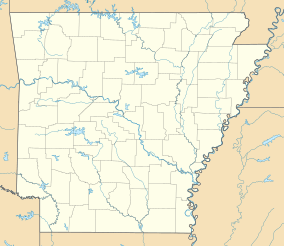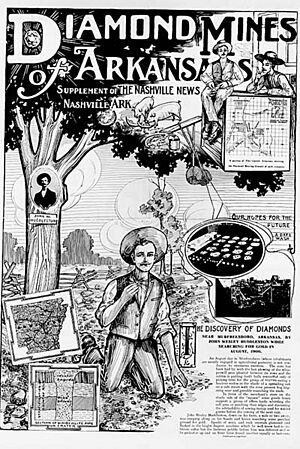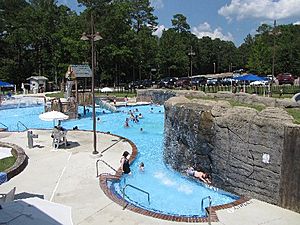Crater of Diamonds State Park facts for kids
Quick facts for kids Crater of Diamonds State Park |
|
|---|---|
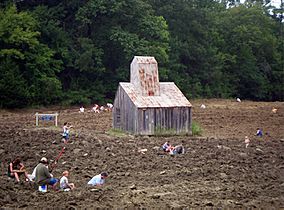
Digging for diamonds, 2007
|
|
| Location | Murfreesboro, Pike County, Ouachita Mountains, Arkansas, United States |
| Area | 911 acres (369 ha) |
| Established | 1972 |
| Named for | Diamond mine |
| Governing body | Arkansas Department of Parks and Tourism |
| Website | Crater of Diamonds State Park |
Crater of Diamonds State Park is a special place in Pike County, Arkansas, where you can hunt for real diamonds! It's a 911-acre (369 ha) state park with a 37.5-acre (15.2-hectare) plowed field. This field is one of the only places in the world where the public can dig for diamonds and keep what they find.
People have been finding diamonds here since 1906. Some famous diamonds discovered include the perfect Strawn-Wagner Diamond and the Uncle Sam. The Uncle Sam diamond, found in 1924, weighed over 40 carats, making it the largest diamond ever found in the United States! The site became a state park in 1972.
Contents
Discovering Diamonds: A Look at History
The story of diamonds in Arkansas began in August 1906. A farmer named John Huddleston found two shiny crystals on his farm near Murfreesboro, Arkansas. He didn't know it then, but they were diamonds!
Soon after, a group of investors bought the rights to explore his land. They tested the soil and found about two carats of diamonds for every 100 tons of material. This showed that diamonds were definitely present in the ground.
Early Mining Attempts
After 1906, several companies tried to mine diamonds commercially. However, most of these attempts didn't work out well. The best diamonds were found in the top layer of soil, a sticky black clay. Over many years, natural forces had concentrated diamonds in this surface layer.
In the early days, from 1907 to 1932, companies used a method called hydraulic mining. This involved using powerful hoses to spray pressurized water. The water would break down the clay and carry the material through special boxes. These boxes would then separate the heavy diamonds from the lighter dirt.
Where Diamonds Are Found Today
During these early mining efforts, many smaller diamonds were missed. They ended up in shallow drainage areas and natural ditches around the field. Today, these old drainage spots are often the best places for visitors to find diamonds!
The park regularly plows the main field, which helps bring new diamonds to the surface. One amazing find from an old drain was the flawless white Strawn-Wagner diamond. Shirley Strawn found this beautiful 3.03-carat gem in 1990.
Myths and Reality of a Diamond Rush
When diamonds were first found, some people thought a "boomtown" would appear near Murfreesboro. There were tales of a "tent city" called "Kimberly." However, records show that "Kimberly" was actually a land development project that failed. There was no big diamond rush or tent city.
Many people were also skeptical because of past diamond-mining scams in other parts of the country. Some even thought the Crater of Diamonds might have been "salted" (meaning diamonds were secretly planted there).
From Private Mines to State Park
During World War II, the U.S. government took over the diamond field. They wanted to extract diamonds for industrial use, like in tools. While some diamonds were found, it wasn't profitable enough for large-scale mining.
After the war, the land went back to private owners. From 1951 to 1972, different people ran tourist attractions there. Howard A. Millar and his wife, Modean, were very successful. They created lots of national excitement, especially after a visitor found the "Star of Arkansas" in 1956. This stunning 15.33-carat diamond brought many visitors to the park.
Eventually, the State of Arkansas bought the entire diamond-producing area in 1972 for $750,000. This is how Crater of Diamonds State Park was created, allowing everyone to experience the thrill of finding diamonds.
The diamond has become a symbol for Arkansas, known as "The Natural State." A large diamond shape has been on the state flag since 1912. Even the Arkansas State quarter coin issued in 2003 featured a diamond.
How Diamonds Form: The Geology of the Park
The Crater of Diamonds is part of a very old volcanic area. About 100 million years ago, hot magma from deep inside the Earth pushed its way to the surface. This magma carried diamonds with it.
These diamonds formed much, much deeper in the Earth, in a stable part of the continent called a cratonic root. The magma then brought them up like an elevator to where we can find them today.
Scientists have studied the rocks here to understand how the diamonds formed. They found that the diamonds came from a special type of volcanic rock called lamproite. This is unusual because most diamonds around the world are found in a different rock called kimberlite. The Argyle diamond mine in Australia is another famous lamproite diamond source.
Fun Activities at Crater of Diamonds State Park
Crater of Diamonds State Park is a fantastic place for adventure! The main attraction is the 37.5-acre (15.2 ha) plowed field where you can dig for diamonds and other cool gems. On average, visitors find two diamonds every single day!
The park has a visitor center where you can learn about the geology of the area. There's also a gift shop and a cafe. If you want to learn more about finding diamonds, check out the Diamond Discovery Center.
After a day of digging, you can cool off at the Diamond Springs aquatic playground. There are also picnic areas and trails to explore. If you love camping, the park offers 47 camping spots near the Little Missouri River.
Your Own Diamond Mine!
For a small fee, you can become a diamond hunter for the day! Visitors find more than 600 diamonds each year. As of 2015, over 75,000 diamonds have been found in the crater. The best part? You get to keep any gemstone you find, no matter how valuable it is!
Besides diamonds, you might also discover other beautiful semi-precious gems. These include amethyst, agate, and jasper. You could also find interesting minerals like garnet, quartz, and calcite.
Famous Diamonds Found at the Park
Many incredible diamonds have been unearthed at Crater of Diamonds State Park. Here are some of the most famous ones:
| Year | Diamond Name | Image | Weight (carat) | Weight (gram) | Color | Finder | Notes |
|---|---|---|---|---|---|---|---|
| 1917 | Canary | 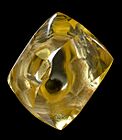 |
17.86 | 3.572 | canary yellow | Lee J. Wagner | Donated in 1926 to the National Museum of Natural History |
| 1924 | Uncle Sam | 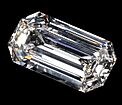 |
40.23 | 8.046 | Wesley Oley Basham | Largest diamond ever found in the United States; now at the Smithsonian | |
| 1956 | Star of Arkansas | 15.33 | 3.066 | Winifred Parker | |||
| 1964 | Star of Murfreesboro | 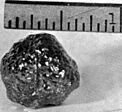 |
34.25 | 6.850 | John Pollock | Largest diamond found by a tourist in Arkansas; valued at $15,000 in 1964. | |
| 1975 | Amarillo Starlight | 16.37 | 3.274 | W. W. Johnson | Cut into a 7.54 carats (1.508 g) marquise shape. | ||
| 1977 | Kahn Canary | 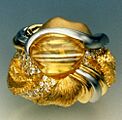 |
4.25 | 0.850 | canary yellow | George Stepp | Naturally flawless. Set into a ring for Hillary Clinton for a 1993 inaugural ball. |
| 1981 | Star of Shreveport | 8.82 | 1.764 | Carroll Blankenship | |||
| 1990 | Strawn-Wagner Diamond | 3.09 | 0.618 | white | Shirley Strawn | Found by a local resident, graded perfect. It is now in the park's collection. | |
| 2015 | Esperanza Diamond |  |
8.52 | 1.704 | Type IIa, D IF | Bobbie Oskarson | Flawless or nearly flawless. It was cut and polished in Arkansas. |
| 2024 | Carine Diamond |  |
7.46 | 1.492 | Chocolate | Julien Navas | A chocolate-colored diamond. It is the eighth-largest diamond found in the United States. |
See also
- List of diamonds


